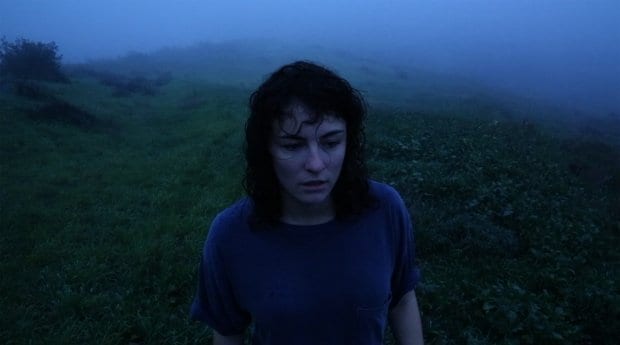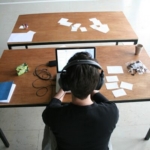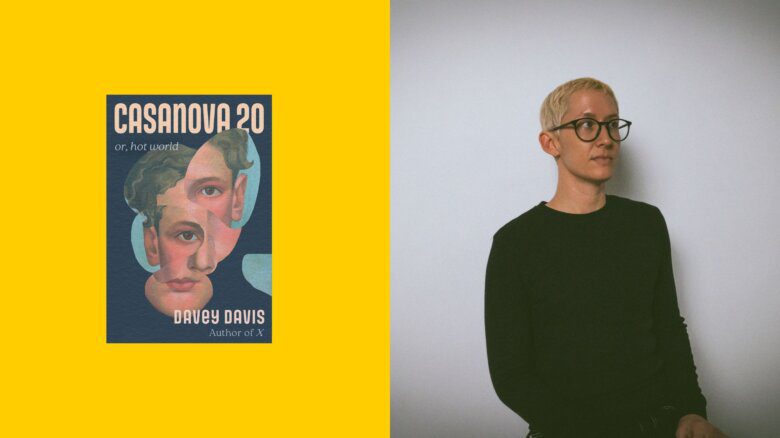It could be scouting guys at that new hotspot, getting an honest opinion on your mesh tank top or navigating the wilds of high school — but in nearly every aspect of his life, a homo lives and dies by his lady friends. In the case of Montreal-based artist Jordan Loeppky-Kolesnik, his best teenage gal pal was also the partial inspiration for his current film project Point Dume.
Based on his friend’s experience living with visual snow (a relatively unstudied neurological condition which causes patients to see television static-like fuzz over their regular vision), the multi-channel installation unfolds around the lives of three women who’ve divorced themselves from society and gone to live together on an island. Touching on themes of heartbreak, separation and the element of losing one’s sight, the work paints a portrait of the trio’s relationship through their sensory experiences.
Shot primarily over one weekend in Malibu, Point Dume is named for a rocky bluff on the north end of Santa Monica Bay. Popular with filmmakers for decades, the area was featured in both the Iron Man series and the original Planet of the Apes, most notably the film’s final shot of a partially buried Statue of Liberty. Despite its foreboding, mystery-novelesque name, it’s a busy and densely populated spot, dotted with luxury properties and beach-goers.
While it’s known for year-round sun, the team lucked out, landing there on one of the region’s rare rainy days; ideal for providing the twilight appearance they were hoping for. Through careful camera work, the location also managed to stand in for an uninhabited landscape, though many shots had a road or house just outside the frame.
Shifting between the three character’s perspectives, the work unfolds almost a year into their self-imposed isolation. Initially a port of refuge from the unexplained situation they’ve escaped, their island paradise has gradually lost its appeal. Far from the solitude they’d originally sought, they now find themselves secretly dreaming of rescue.
Whether it’s the Brooke Shields version of The Blue Lagoon or the original 1974 Madonna-free Swept Away, any decent desert island movie needs a minimum of one sex scene. And Point Dume lives up to that formula. Wary of being a dude portraying chick-on-chick action, Loeppky-Kolesnik took a cautious, measured approach to the process.
“I worked with my actors closely, checking in with how they felt,” he says. “We reviewed the editing together and tried to reach an honest depiction of their sexuality.
“Fags and lesbians have so much in common, but also have so much distance from each other. As a queer guy who’s very in touch with my femininity, there’s something interesting about representing lesbian sexuality. But it’s also fraught with the danger of falling into the male gaze, even if it’s being done by a male gay.”
Point Dume runs until Sun, April 5
Gallery 8-11, 233 Spadina Avenue, Toronto
8eleven.org
www.jmlk.ca


 Why you can trust Xtra
Why you can trust Xtra


